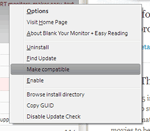For some time I’ve been thinking about passing the Zend PHP exam, and having possibility to attend to Zend PHP 5.3 Certification tutorial session during the recent PHP/Zend Conference 2010 was the thing that pushed me to finally do it. I enrolled for the conference too late to get a free voucher for the examination, so I bought it myself after coming back home, and on Dec 13th I finally got the ZCE title (yay for me!).
What does it test?
At the ZendCon it was said that the PHP 5.3 update of the exam was a huge leap forward in the meaning of quality and thoroughness of testing. Before this version, to pass the exam it was necessary to more or less memorize the manual — function names, arguments and return values. As I didn’t pass any previous version I can’t comment this statement, but I know that on my set of questions I didn’t have many questions that could be labeled as “manual questions” — I remember one “what is the output of the following code” question that was somehow related to the knowledge of function arguments, but it was enough to know the capabilities of the function rather than “is it ‘f($haystack, $needle)’ or ‘f($needle, $haystack)'”, and other about a name of a configuration option, but a very popular and important one.
I found the exam very interesting, as the questions were not only about “dry” PHP code, but also about broadly defined web-related technologies. Databases, web security, web services, HTTP protocol, etc. Zend’s training department strongly stated that the exam is not only about knowing the function names, but about assessing if the person has all what it takes to be a good programmer. And I might confirm that — without proper experience in the web development field it is very difficult to pass the exam. I mean, you can memorize all the definitions of what XSS, CSRF, SQL join et al. is, but the questions are not about definitions, but about a proper understanding of concepts, like “would X solve the problem of CSRF”.
Is it difficult?
It depends. Even if you work with PHP applications on a daily basis, it’s still necessary to check preparation guides. Why? For instance, I’ve been using PHP since PHP3, but I didn’t need to use web services at all. And from study guides and the tutorial I mentioned before I knew that even if web services is not the most important part of the examination, I need to know at least something about all the parts of the test.
Most of the questions are simply “either you know the answer or you don’t”, and that way you can call the test easy. There are also some analytical questions, where you have to force yourself to do some thinking — but if you know how PHP works, it’s only a matter of time to get the proper answer.
The test consists of 70 questions, for which you have 90 minutes – it’s a more than a minute for a question. It’s not much, but as I’ve said before, for most of the questions either you know the answer or you don’t. That way you can go through the easy questions while marking the other for review (the examination software allows that), not wasting time on things you can’t answer from the top of your head.
Watch out for trick questions. It’s especially important on “what does this code print” — one single character can totally change the meaning of the code. If everything seem obvious, usually it’s not. Look at return values, variable scope, function calls etc.
My strategy for this test was:
- First pass: easy questions, test questions (generally those which took me just a few seconds)
- Second pass: difficult, analytical questions
- Third pass: questions I didn’t know the answer for, but with the possibility of proper extrapolation/guessing (questions without any possibility of me answering other way than guessing fell into the first category).
With this method it took me about one hour to fill all the answers.
How to prepare
Zend offers courses preparing for the exam, but in my opinion it’s an overkill. If you only need to refresh and organize your knowledge, $1000 for the course (well, minus $195 for the included exam voucher) is a bit too much. If you need more training (e.g. you don’t have enough experience with PHP), this course wouldn’t help, as it is not designed to teach you PHP.
Everything you need to know about PHP to pass the exam can be found in the manual, which is great, but it contains knowledge organized in a way that is not very helpful while studying for the exam. After buying voucher for the examination you should receive PDF version of Zend Certification Study Guide, which can help you to plan your learning. Generally, I’d advise to read the whole basics section of the manual — variables, data types, control structures, OOP, new features of PHP 5.3 (LSB, namespaces), and to skim through index of some elementary functions (string, array) to know what is possible with PHP. Check the list of topics covered by the exam (to be found on Zend page) and make sure that you know at least basics of each entry.
One more word about the Study Guide provided by Zend – it’s poor. It’s poor mainly because it’s not finished and at some places you can find placeholders instead of some real information. It’s nice to get anything (especially if there are sample questions — and it’s very important to read them as they give you some outlook how the test looks like), but after a year that has passed since the test has been updated I’d expect something better.
What to focus on?
According to the rules of Zend Certification I can’t leak out any questions, but I can give some suggestions. Aside from the obvious, I’d recommend to review especially:
- references
- streams, contexts etc.
- XML processing
- OOP’s features like inheritance, static methods, LSB
- PDO
SQL-related questions are quite easy, so if you know how to do select, insert and how inner join works, you’re good.
Any benefits?
A value of the certificate itself is debatable. It’s hard to tell if a potential employer will take that paper into consideration or not. Still I think it wouldn’t do any harm. It’s a proof that you meet a certain level of PHP (and web development in general) skills. Exactly like an English language certificate is to be verified on the first interview, your PHP skills will be verified sooner or later, but if you don’t have a proper entries in the résumé, you might not even be invited to the interview.
Few days ago there was a discussion about that on Twitter, and one of the guys said that having ZCE title means that you are not creative and you are wasting your time which could be spent on open source projects otherwise. I think its a very radical opinion. Having ZCE doesn’t exclude being involved in OSS projects. Also OSS projects are long term involvement that can’t be compared to one evening spent on a short recap. My opinion is — don’t put all your eggs in one basket. You can’t rely on the certificate solely, just like you can’t rely on open source projects. Working on public projects can be beneficiary to your skills (but — looking at some of the high-profile projects — it doesn’t have to), and is a nice point on your CV, but just like with anything, employer might don’t give a crap about OSS (and saying “those companies that don’t take open-source into consideration are evil” is childish, recruitment procedures in big companies might be far away from the nearest person that knows anything about computers).
Preparation for the exam can be a value itself. It’s a motivation to look into subjects one didn’t need before (for me it was PDO – I was using abstraction layers, so I didn’t need that), and make a review of features and changes one possibly didn’t know about.
I decided to get the certification because I wanted to have some written proof of my skills, as even a list of prior projects does not say anything about the quality of those projects.
Should I re-test if I have PHP4/PHP5 cert?
Well, it’s up to you. If the certificate is for your better self esteem – go ahead. If it’s for improving your position on the market, it’s like with the value of the certificate in general — employer might value you better if you have the newest version of the document, but he doesn’t have to; he might don’t know the difference between PHP5 and PHP5.3 ;)
Conclusion
In my opinion, if you have some time and two hundred bucks to spare – go ahead :)


